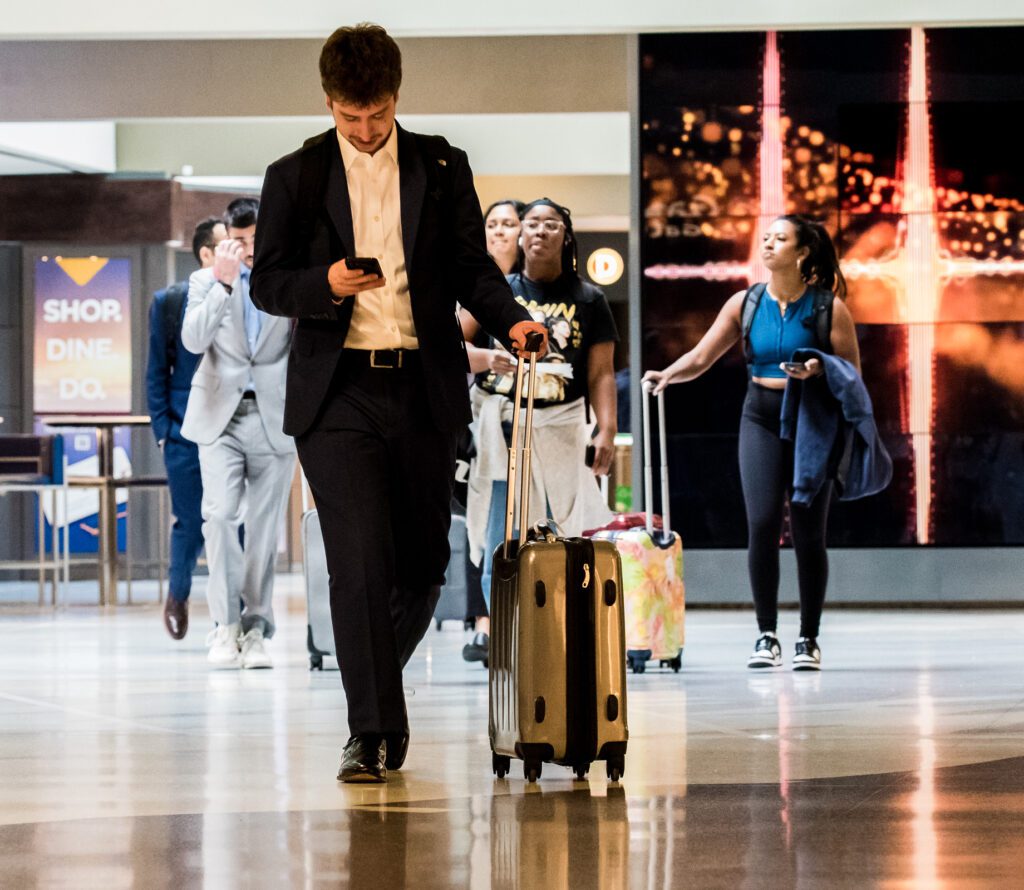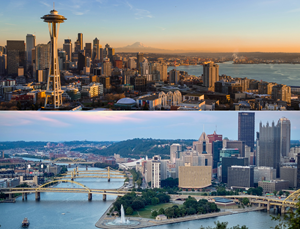Business Travel is Back, But Caution Remains
Numbers headed in right direction as some companies rethink policies
By Rick Wills
Published November 28, 2022
Read Time: 3 mins
Nearly three years after Zoom meetings replaced virtually all business travel, people are taking to the skies again for work.
“It’s basically back to pre-pandemic rates,” Kelly Felsing, director of groups and meetings travel at Avenue Two Travel, a Philadelphia-based agency with a branch in Pittsburgh, said of bookings for trade shows, conventions and group travel.
While airlines don’t compile exact numbers of corporate and business travelers, information from agents like Felsing, along with reports from the hotel and airline industries and surveys of businesses, suggest a significant bounce-back from the hesitant return to business travel of late 2021.
In recent weeks, Felsing has organized travel for 250 people attending an independent contractors’ trade show in Nashville, a similar number for a heating and air conditioning trade show in Atlanta and a group trip for about 50 officials and patrons of Pittsburgh’s Civic Light Opera to take in theater in London
Sluggish restart
It has been a slow return for business travel, Felsing said. Travel to trade shows she booked in October 2021, the first since the pandemic’s start, still had stringent social distancing rules, on-site nursing staff and testing requirements.
Earlier this year, industry trade groups and hotel companies pointed to significant upswings in small business meetings as well as larger conventions and trade shows.
In Las Vegas, for example, the number of trade shows and events scheduled this year is actually higher than in 2019, though attendance is expected to be down.

While businesses have understood the value of virtual tools, some believe technology cannot replace in-person meetings and trade shows. (Photo by Beth Hollerich)
What’s not coming back as quickly as group travel are business trips by individuals. Some employers continue to set limits on travel. And because of COVID restrictions, visitors are sometimes not allowed in some offices.
In New York, the city’s tourism promotion agency forecasts that business travel will not exceed 2019 levels until 2025.
While businesses learned the value of Zoom, Felsing and others in the business say the technology alone can’t replace business meetings and trade shows.
“So many conversations just would not happen if these people were not at the same event, which is why trade shows and conventions have started up again and are important,” she said.
By the numbers
Travel managers estimate domestic business travel volume this year is 63 percent of what it was in 2019, while international business travel is back to 50 percent of pre-pandemic levels, according to a survey conducted by the Global Business Travel Association in October.
In addition, that survey found that 26 percent of respondents estimate international business travel volume has recovered to more than 70 percent of pre-pandemic levels.
More than 75 percent of the travel managers surveyed expect the number of business trips taken by employees at their companies will be higher or much higher in 2023 than 2022.
Yet for all the signs that business travel is taking root again, the unpredictable path of the pandemic has stifled a widespread return to 2019 travel levels.
And predictions also can be disrupted by the unpredictable—events like Russia’s war in Ukraine and China’s “zero COVID” lockdowns.
Then there’s a question of whether businesses will even want travel again at 2019 levels.
According to business travel statistics from Bloomberg, 84 percent of the 45 biggest corporations from the United States, Asia, and Europe plan to spend less on travel in a post-pandemic world.
Still, airline executives on earnings calls as recently as a month ago were very bullish on the return of business travel, The New York Times reported. Delta Air Lines, for one, said 90 percent of its corporate accounts expect their travel to stay the same or increase in the fourth quarter.
United Airlines, too, said its strong third-quarter results suggested durable trends for air travel demand that are more than fully offsetting any economic headwinds, according to the Times.
“The travel recovery continues as consumer spend shifts to experiences and demand improves in corporate and international,” Delta CEO Ed Bastian said in a statement.
Delta said business bookings improved post-Labor Day and are at “the strongest recovery rates” since the start of the pandemic, rising to 80 percent of 2019 levels by the end of the quarter. The company expects the trend to continue in the fourth quarter, Barron’s reported.
Watch
This Next
Read
This Next





